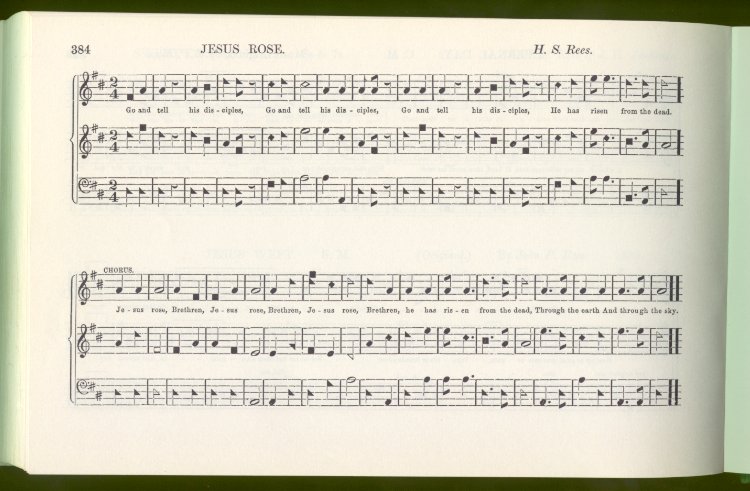 Jesus Rose from The Colored Sacred Harp
Jesus Rose from The Colored Sacred Harp
This slim, oblong book contains as much community effort, as much eccentricity, and as much rich material as any of the shape‑note hymn compilations it is designed to resemble. It has a layered and recursive form, in which various streams separate and converge: a biography, a personal memoir of the folk revival, a critical survey of scholarly literature on African American Sacred Harp singing, a generous selection of evocative photographs spanning the twentieth century, and a CD that ranks among the most valuable and carefully compiled collections of historical Sacred Harp recordings ever assembled. John Bealle’s introduction plays the role of the traditional “rudiments of music” section of a shape‑note hymnal, providing a concise and sensitive history of Sacred Harp singing, its diverse adherents, and its intersections with the folk revival. Joe Dan Boyd’s prologue prepares the reader to engage the main body of the book (which dates from 1969) as a document of “the eager, innocent spirit by which so many people engaged traditional culture at that time” (p. 24). Boyd’s self‑awareness pervades the book and makes it a more complex work than most other celebratory folklore biographies.
In many respects, judge Jackson (1883‑1958) was much like other leading figures in the southern communities that sang from The Sacred Harp in the early twentieth century. He was born poor and rural, did agricultural work all his life, gained a patchwork music education from a variety of singing‑school teachers and friends, taught his own large family to sing, became a prosperous and charismatic cultural leader in his own community, and eventually compiled a shape-note tunebook that included some of his own compositions.
Here’s the shape note for singing along:


One of my 2010 goals, as yet unrealized, is to attend a Sacred Harp singing. Thanks for sharing this interesting fellow’s story.
Sacred Harp singings are really interesting. They vary in sound quality a *lot*, though. I think the best place to listen is a “convention.”
A singing is usually people within a smallish local area. In LA there’s one on the west side and one on the east side. In the bay area there are four, I think.
A convention is where people get together from across a large area. For example one of the better singers from my local group in Berkeley is flying to a Long Beach convention this weekend.